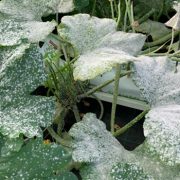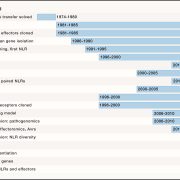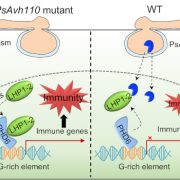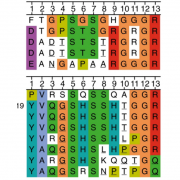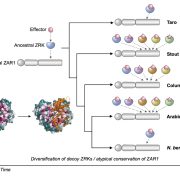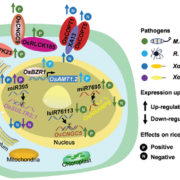A link between RNA processing and plant immunity
Peng, D. Guo, Y. Guo, et al.
Shui Wang, College of Life Sciences, Shanghai Normal University, Shanghai, China
Background: Immune receptors recognize invading microorganisms and activate immune responses. There are two types of immune systems, innate immunity and adaptive immunity. In animals, innate immunity is activated by a finite number of the germline gene-encoded receptors, whereas adaptive immunity is induced by an infinite number of somatically recombined gene-encoded receptors from T- and B-cells. In plants, innate immunity is the only immune system, as plants have no counterparts of T- and B-cells. Genome sequencing studies have revealed that the number of genes encoding immune receptors in plants is very limited.
Question: It has long been a mystery how plants make use of the limited immune receptor genes to combat diverse and ever-evolving microorganisms. RNA processing is proposed to be an approach to boost the complexity of these genes. What is the signaling link between RNA processing and plant innate immunity?
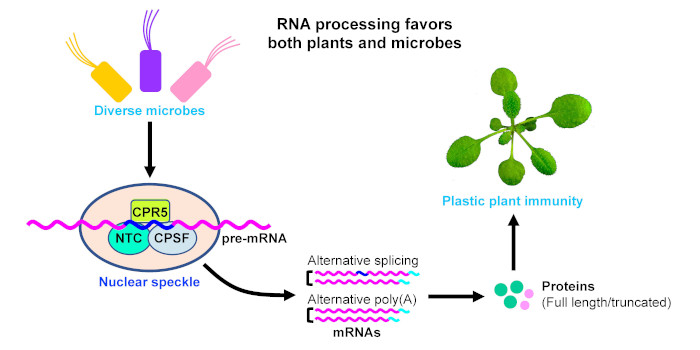
Findings: Arabidopsis CONSTITUTIVE EXPRESSER OF PATHOGENESIS-RELATED GENES 5 (CPR5) was previously identified as a key immune regulator. In this study, we further identified CPR5 as a novel RNA-binding protein that forms a complex with the RNA processing regulators NTC and CPSF. Intriguingly, the CPR5–NTC–CPSF complex is localized in the RNA processing organelle termed nuclear speckles. Genome-wide profiling of RNA transcripts in Arabidopsis demonstrated that there are about 500 alternatively spliced genes regulated by CPR5. Usually, alternatively spliced transcripts encode either full-length or truncated proteins. The ratio of full-length/truncated immune regulators may determine the specificity and intensity of plant immunity against diverse microorganisms. Therefore, these findings reveal that a novel signaling pathway links RNA processing with plant immunity.
Next steps: We want to explore the role of the identified CPR5-regulated alternatively spliced genes in plant immunity. Also, we want to genetically dissect the signalling pathway through which the RNA processing regulators NTC/CPSF function downstream of CPR5 to modulate plant immunity.
Reference:
Shun Peng, Dongbei Guo, Yuan Guo, Heyu Zhao, Jun Mei, Yakun Han, Rui Guan, Tianhua Wang, Teng Song, Keke Sun, Yunhan Liu, Ting Mao, Huan Chang, Jingshi Xue, Yingfan Cai, Dong Chen, Shui Wang (2022) CONSTITUTIVE EXPRESSER OF PATHOGENESIS-RELATED GENES 5 is an RNA-binding protein controlling plant immunity via an RNA processing complex. https://doi.org/10.1093/plcell/koac037


